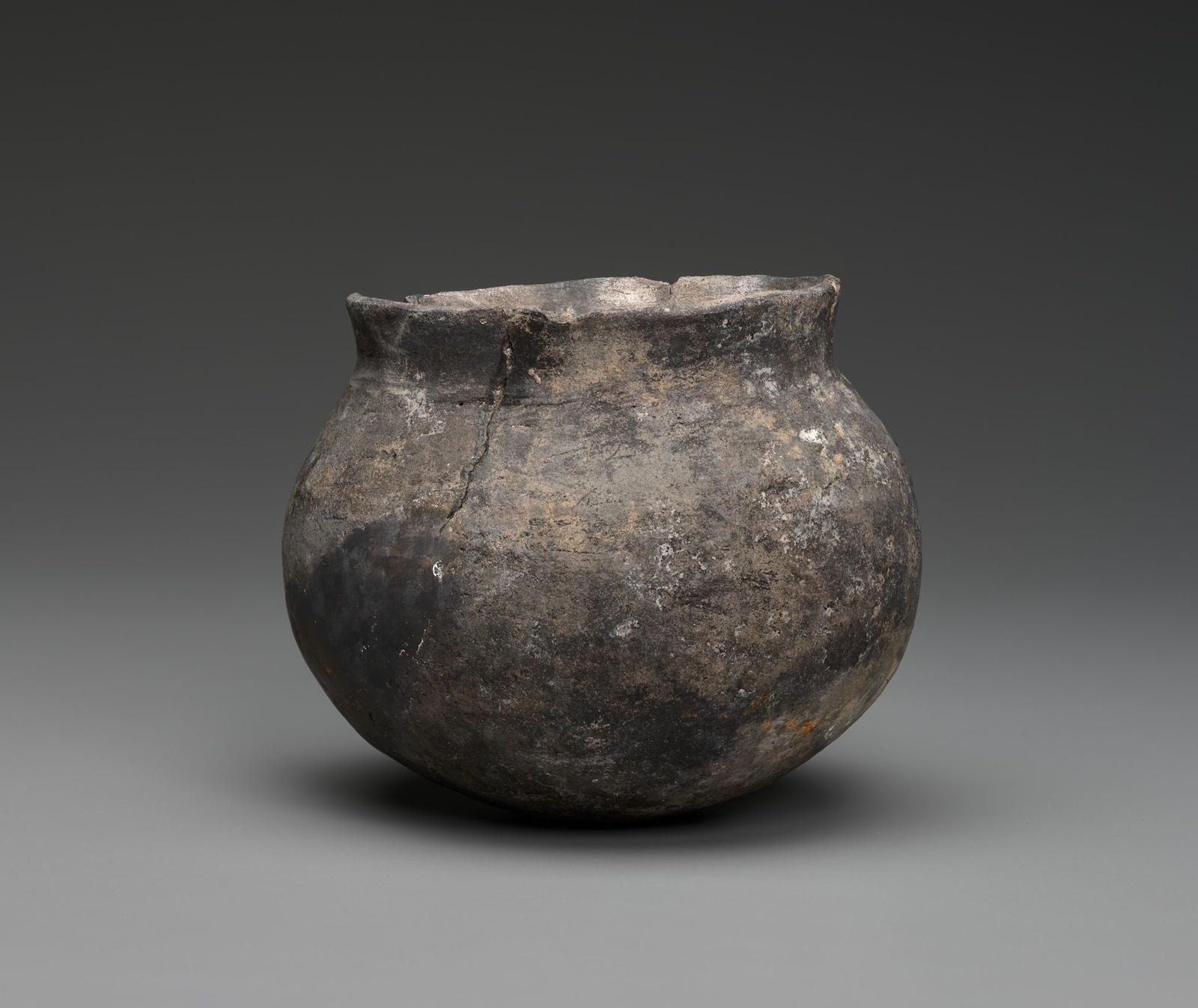
Unknown, Slave-Made “Colonoware” Vessel, 1700–1800. Earthenware. Charleston County, South Carolina.
Before revolutionaries dumped tea in the Boston Harbor or fought Redcoats at Lexington and Concord, early Americans protested British imperialism via utilitarian earthenware bowls, jars, and pots known today as colonoware. Colonoware was made from coil and slab techniques and fired in hearths. Originating in the seventeenth-century American South, enslaved people were often the artists behind these incredible pieces of pottery.
The need for locally made ceramics in Colonial America was born out of Britain’s mercantilist policies. In her book, African-American Art: A Visual and Cultural History, Lisa Farrington describes how colonoware subverted British law:
Not only was it illegal for decorative ceramics to be produced in the colonies, but even the production of utilitarian pottery was limited by law. As a result, colonists made their own rudimentary pottery [colonoware] to avoid the expense of importation, and they underreported the amount produced to circumvent taxes or prosecution. Those with slave labor, particularly on plantations where a great deal of earthenware was needed, created colonoware in abundance in the 1700s. By avoiding embellishments, African American potters ensured that their colonoware would not be deemed decorative or intended for resale in defiance of the British mandate.
As Farrington notes, countless pieces of this subversive pottery were created by enslaved people. While colonoware would have certainly provided slaves with a much-needed creative outlet, in some cases, enslaved colonoware craftsmen were able to use the proceeds from colonoware sales to buy their freedom. In this small way, early Black Americans were able to fight for their freedom via the creation of colonoware, just as white Americans were using colonoware to fight for their political independence.
Today, art historians often find West African influences colonoware pieces. Symbols representing Gabonese and Angolan deities have been found on the underside of some vessels. Additionally, enslaved colonoware makers sometimes utilized folded strip roulette, an African pottery technique using plant blades to form grooves in the clay. These aspects of colonoware serve as reminders of the various cultures enslaved people carried with them to America.
Colonoware is a distinctly American art form that’s influence can be seen in works by David Drake, Afro-Carolinian face vessels, and even contemporary ceramicists. More than this, however, colonoware tells important stories about ingenuity and triumph over oppression.






















![DEl Kathryn Barton [Australian b. 1972] the more than human love , 2025 Acrylic on French linen 78 3/4 x 137 3/4 inches 200 x 350 cm Framed dimensions: 79 7/8 x 139 inches 203 x 353 cm](/sites/default/files/styles/image_5_column/public/ab15211bartonthe-more-human-lovelg.jpg?itok=wW_Qrve3)



